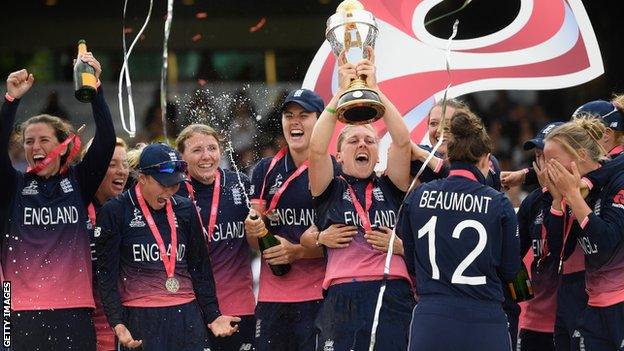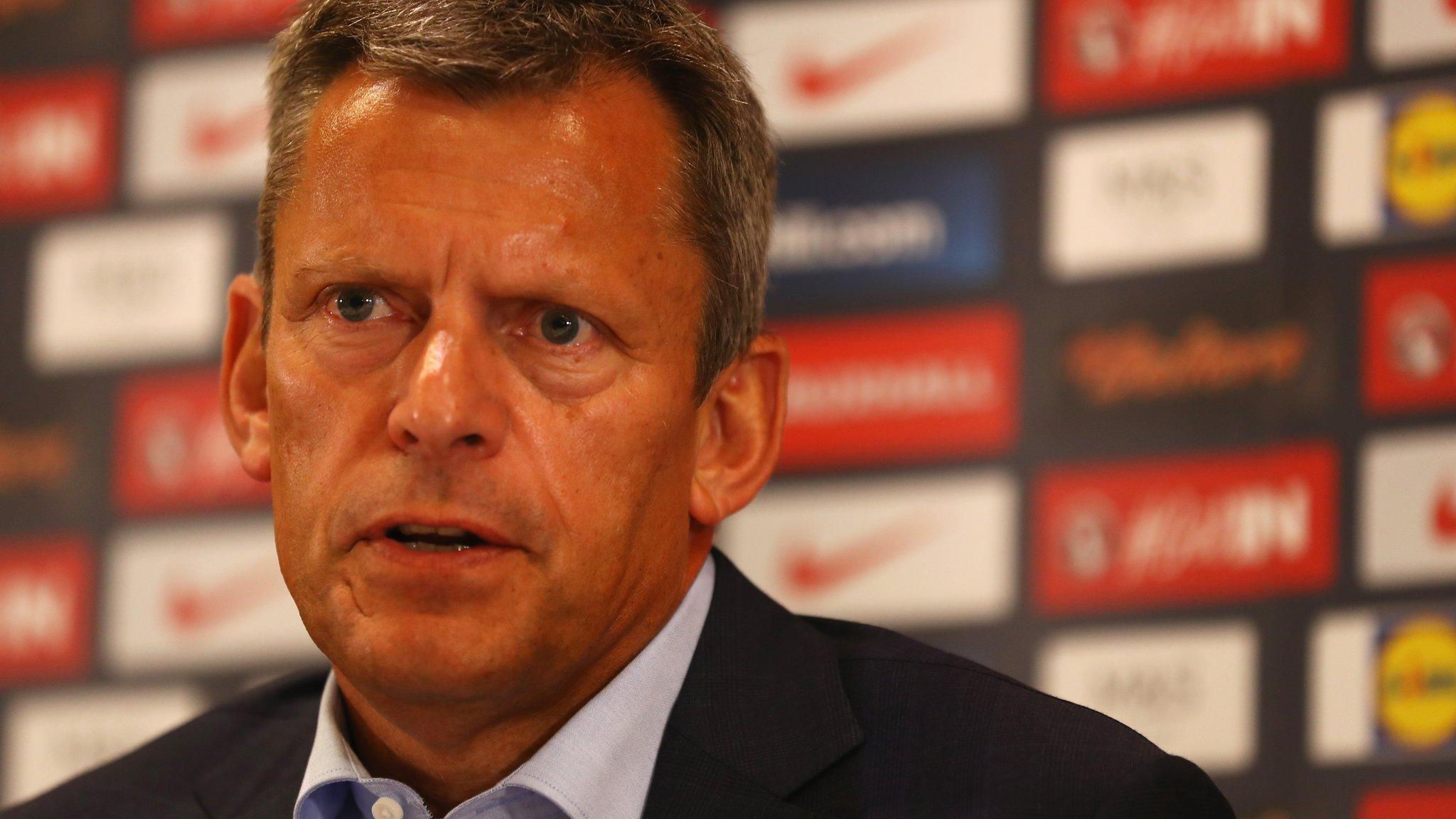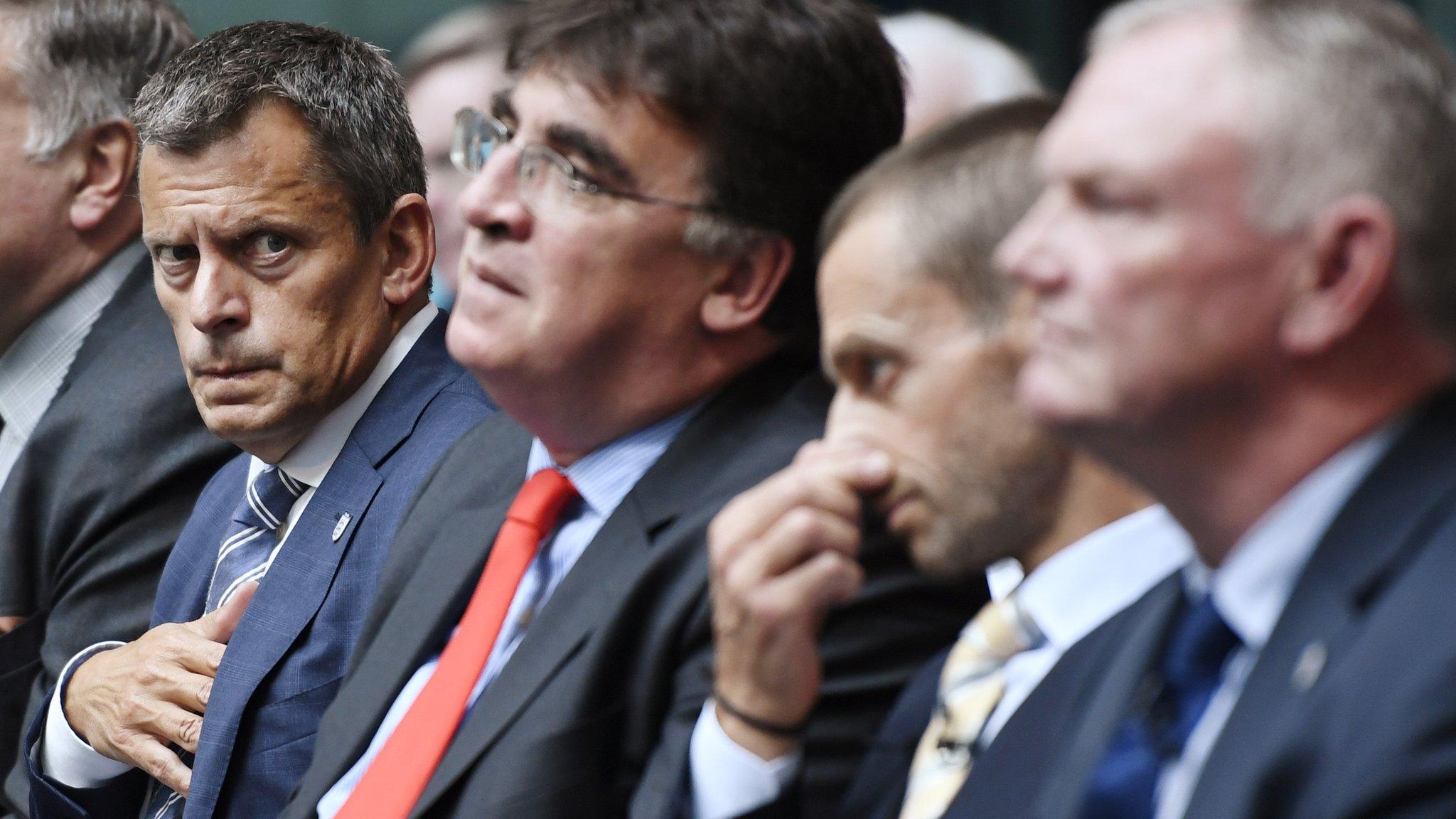Gender pay gap: England & Wales Cricket Board figures show 38% gap
- Published

England's beat India to win the Women's World Cup at Lords in 2017
The England and Wales Cricket Board says it is committed to tackling a "gender pay imbalance" within the organisation.
In a report based on 2017 findings, it shows the average hourly rate for a man at the ECB was 38% higher than that for woman.
It says the disparity is partly due to a "higher ratio of men to women at all levels", with the top pay level 88% male.
All UK companies with 250 or more employees are required by law to reveal their gender pay gap - the difference between the average hourly wages of men and women they employ - by the start of April.
The ECB is the latest major sporting body to publish its figures, following the Football Association (FA), Jockey Club Racecourses (JCR) and Lawn Tennis Association (LTA).
The ECB has the highest mean gender pay gap of the four, although their median pay gap - the difference between the middle male and female wages - is 17%, slightly lower than the national overall figure of 18.4% for all part-time and full-time employees.
What the numbers mean
The mean, or average, is the sum of the salaries of all employees at a company divided by the total number of employees. The mean pay gap is the difference between this figure for males and females.
The median is the figure in the middle when all wages are ordered from lowest to highest. The median pay gap is the difference between the middle male wage and middle female wage.
Public sector organisations have to publish a snapshot of their employee pay as of 31 March 2017, with the date set at 5 April 2017 for private businesses.
At the ECB, the average hourly pay gap of 38% means that for every £100 earned by men, women earned £62.
The report listed several key factors for the imbalance such as the inclusion of the wages of centrally contracted England players in the figures.
This will have a significant influence because of the large disparity between what male and female internationals are paid. In contrast, the FA do not pay the wages of the England men's team.
The ECB also cited the "historic trend towards employing ex-players in senior management, coaching and operational roles" and the fact that currently all first-class umpires in the domestic game are male.
Gender pay gap figures | ||
|---|---|---|
Body | Mean pay gap | Median pay gap |
FA | 23.2% | 12.1% |
LTA | 31% | 18% |
JCR | 3% | -23% |
ECB | 38% | 17% |
What else did they reveal?
Organisations are also required to release information about the bonuses paid to men and women and the proportion of males and females at each of four pay levels.
Only 12% of the ECB's highest pay level were women - a lower proportion than at the FA, JCR and LTA.
The ECB paid 58% of female staff a bonus compared to 56% of men and its median bonus pay gap was 0% - due to paying "a flat rate to everyone eligible" and ensuring its median man and woman earned the same bonus.
Yet the mean bonus pay gap was 60.2% because of a higher ratio of men in senior leadership roles where the overall remuneration includes a bonus to reflect "the importance of rewarding performance in these roles".
Next steps
The ECB said it wanted to "create an environment where women can develop their careers, fulfil their potential and shape the future direction of the sport".
To achieve this, it said the organisation would "stimulate diverse thinking through a programme of external speakers" and create new guidelines to hear broad viewpoints in projects.
It added the body would offer "appropriate support for female professional players" and "targeted training and opportunities" for female employees.
The ECB said that work will continue in 2018, "aimed at creating an inclusive environment and a diverse workforce which can attract, develop and retain talented employees from all backgrounds".
Pay gap v equal pay
The gender pay gap and equal pay are two different things.
The gender pay gap is the difference in average earnings between men and woman.
Equal pay is paying men and women the same amount to do the same job and has been a legal requirement since 1970. The gender pay gap figures do not necessarily show whether women are being paid less than men in the same roles.
If an organisation has more men in senior positions on higher salaries, that can explain why there is a gap between the average salary earned by males and females at the business, even if men and women in the same job are always paid the same.
Across all employees in the UK, men are paid 18.4% more than women and 9.1% more for full-time staff, based on median gross hourly earnings in April 2017, according to the Office for National Statistics (ONS)., external
What about those yet to disclose?
The Rugby Football Union (RFU) and British Cycling are among the national governing bodies with more than 250 employees that are yet to disclose their gender pay gap data.
Smaller governing bodies, such as UK Athletics, that have fewer than 250 employees are not required to publish their gender pay gaps.
Public sector organisations have until 30 March to publish, while businesses and charities have until 4 April.
Any organisation missing this deadline will at first be contacted informally by the Equality and Human Rights Commission (EHRC), the body responsible for enforcing gender pay gap reporting.
The EHRC say any organisation failing to comply could then face "unlimited fines and convictions".
- Published2 March 2018

- Published7 February 2018

- Published31 October 2016
